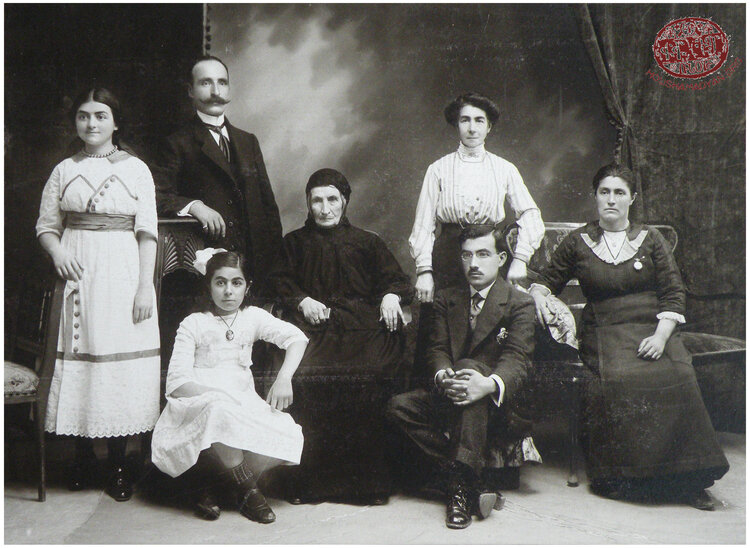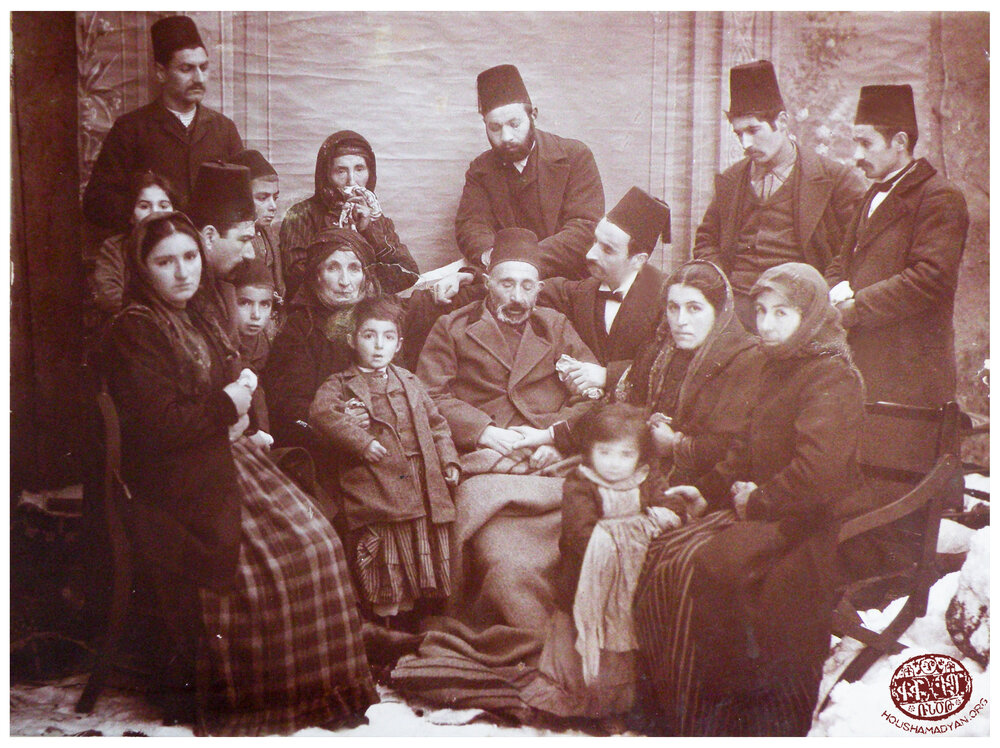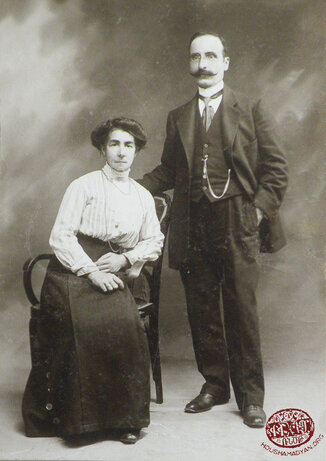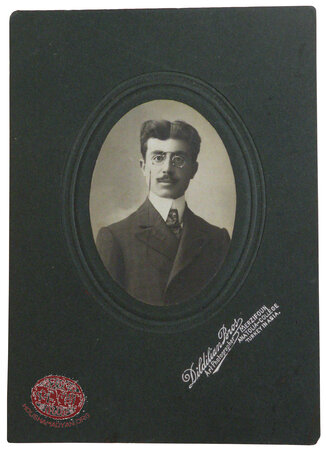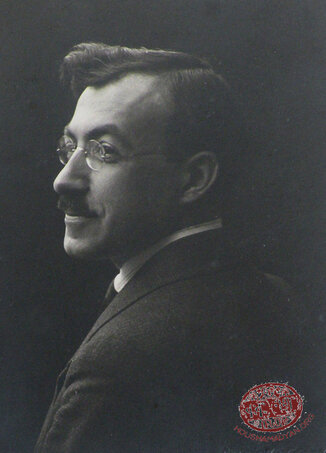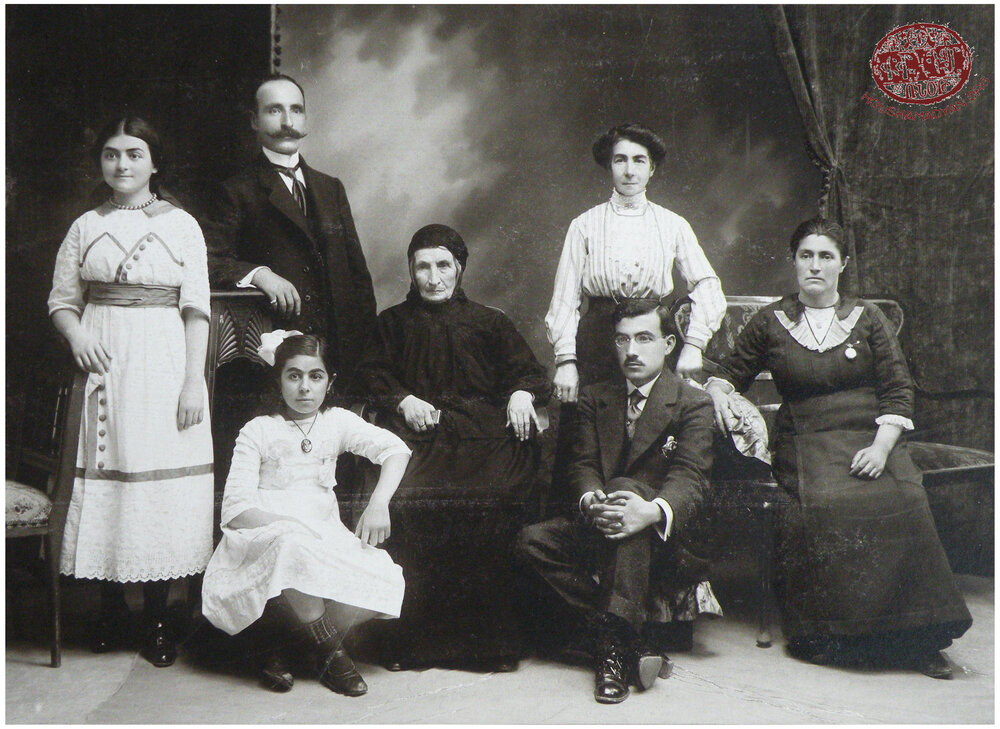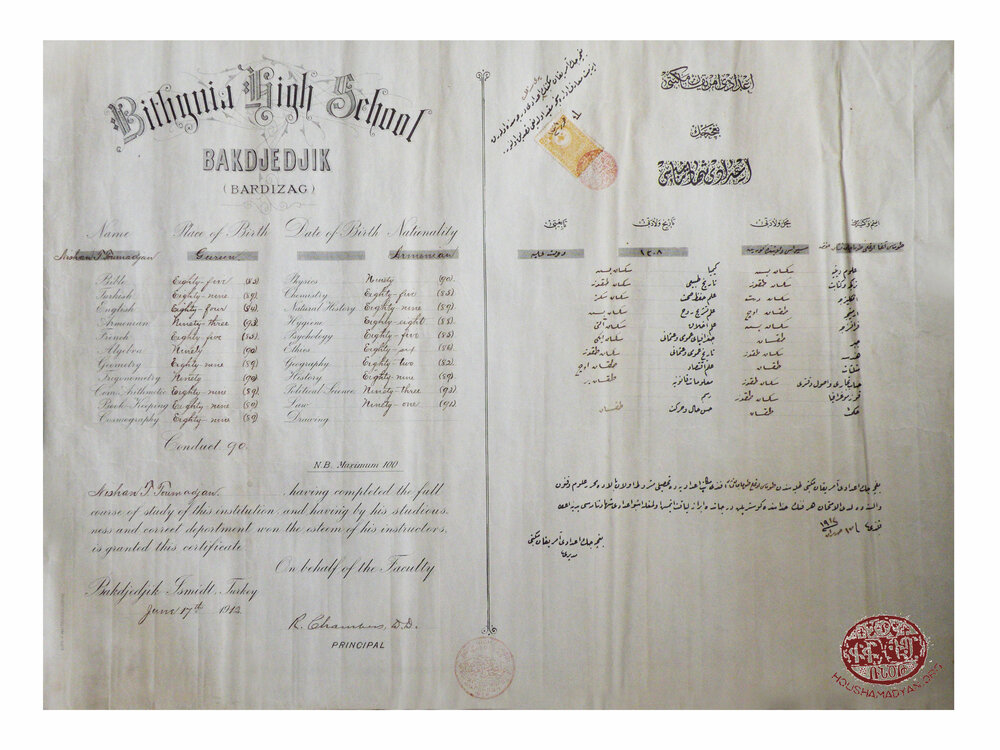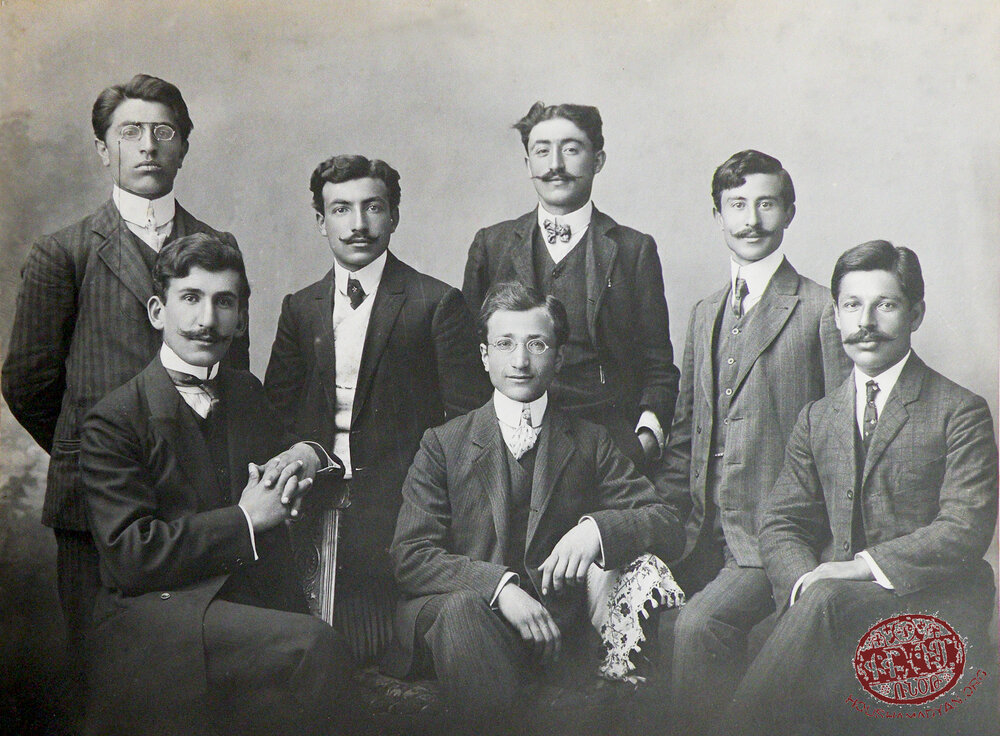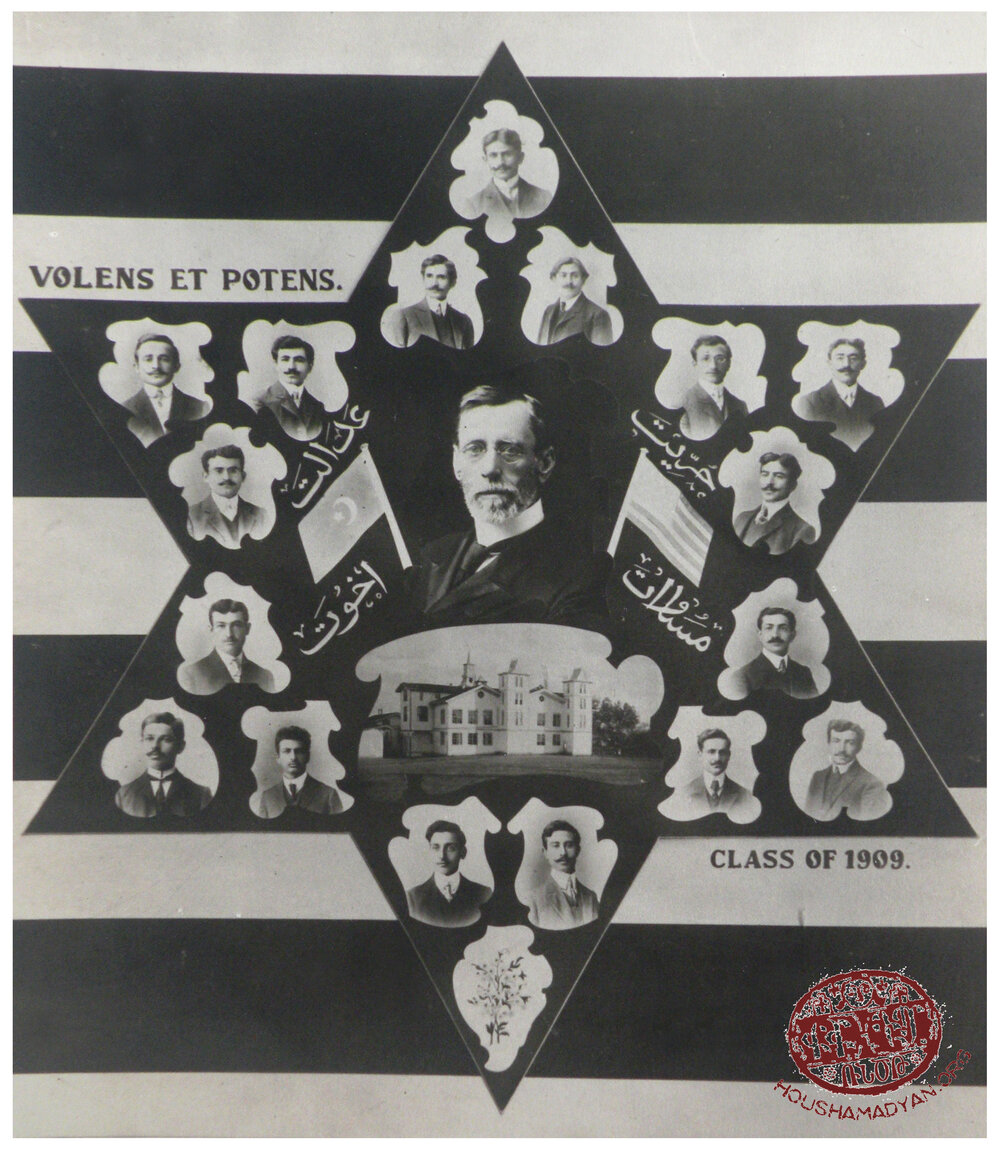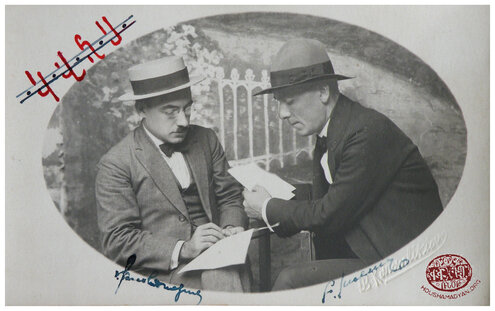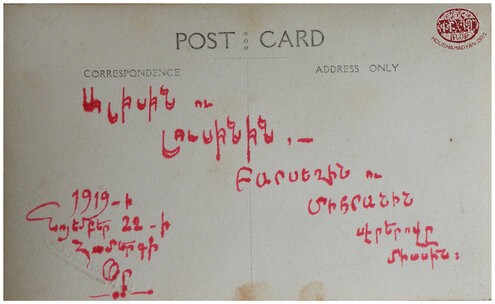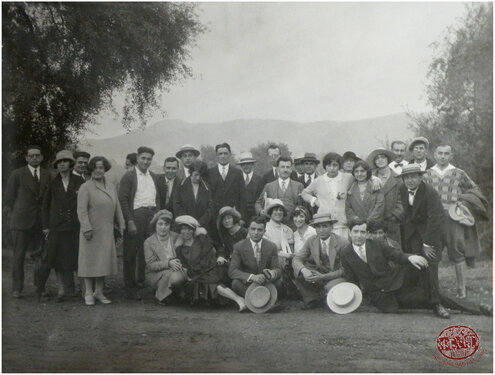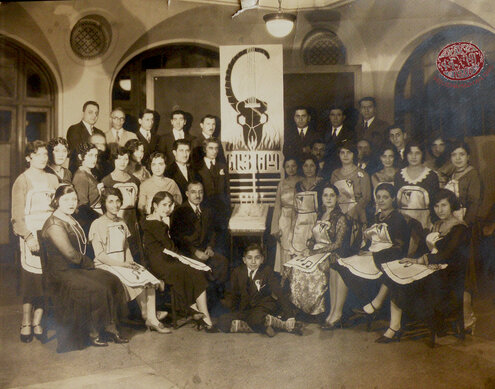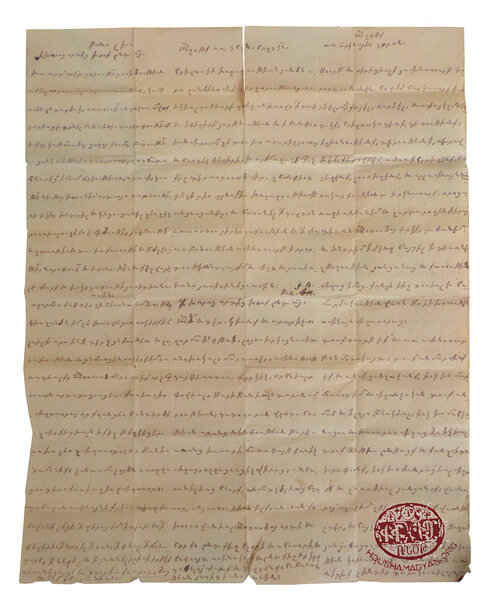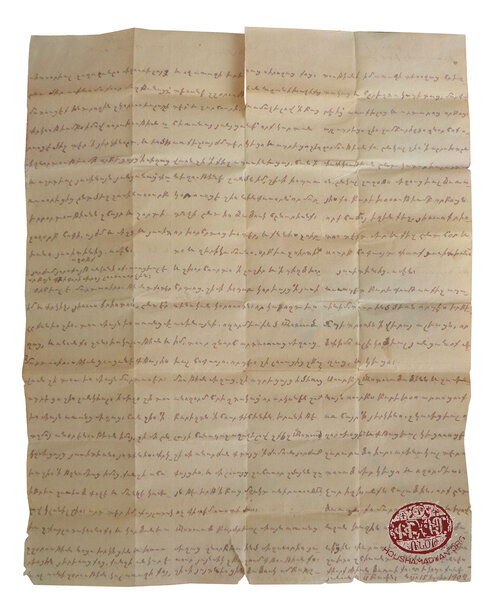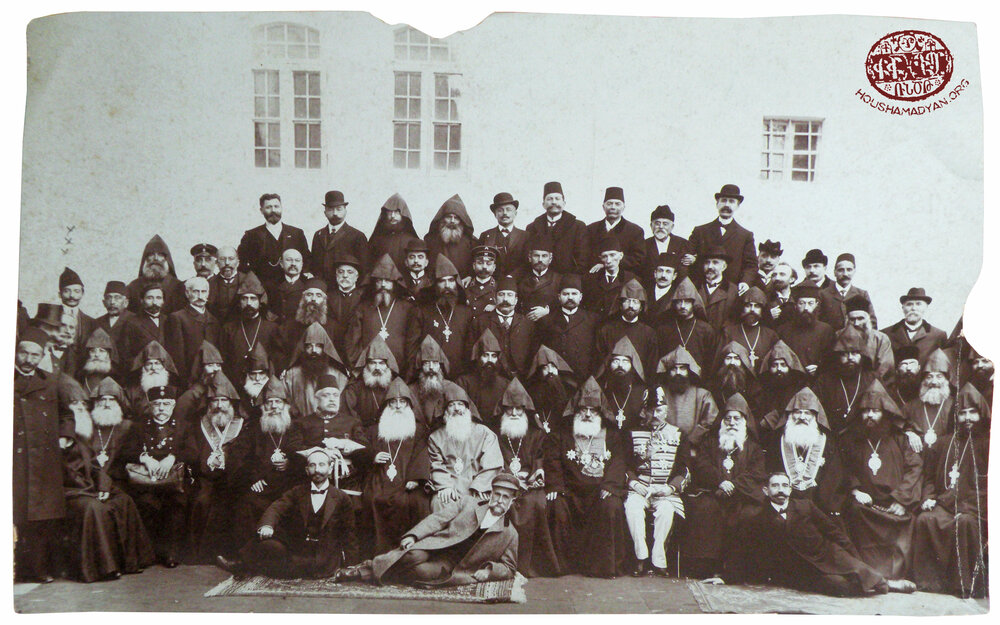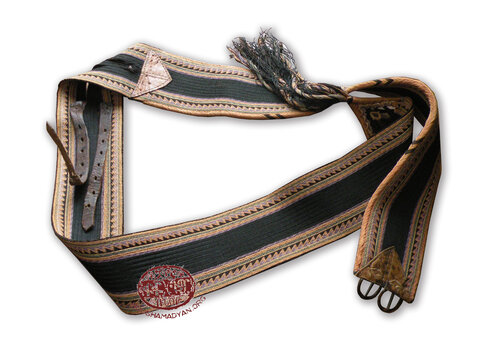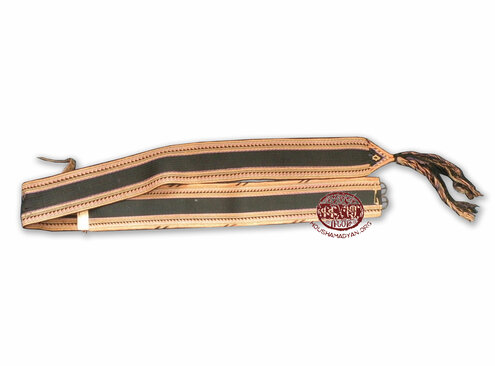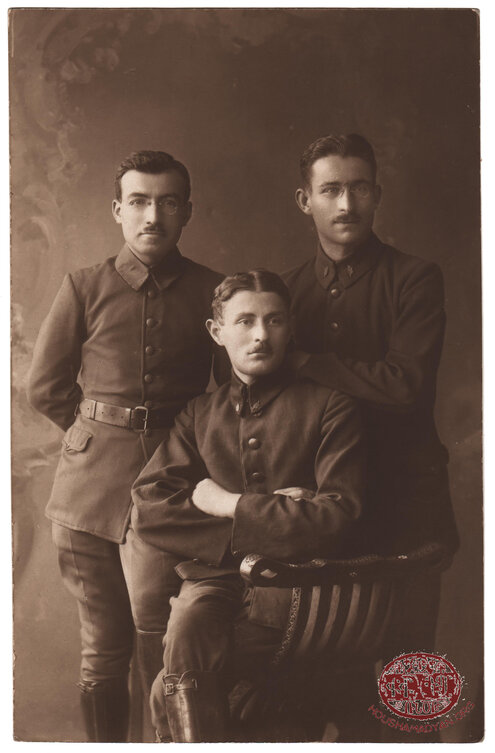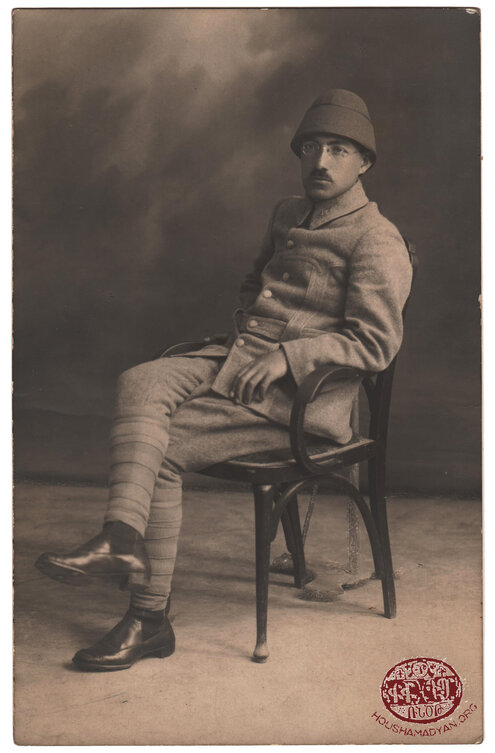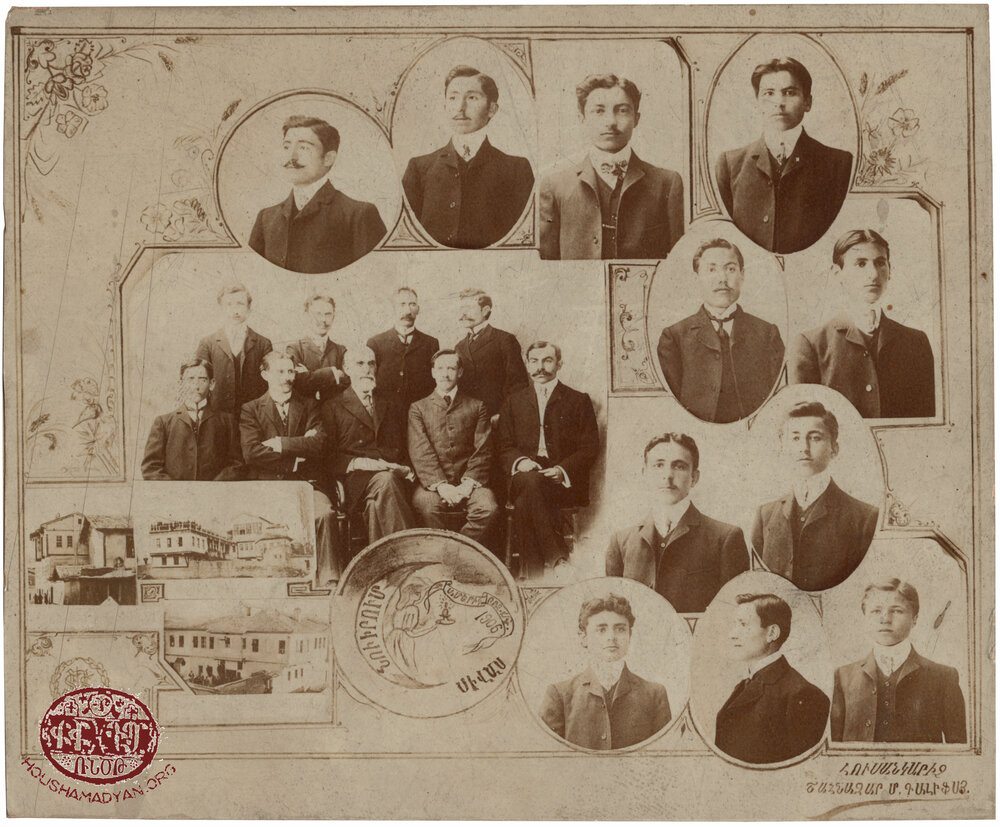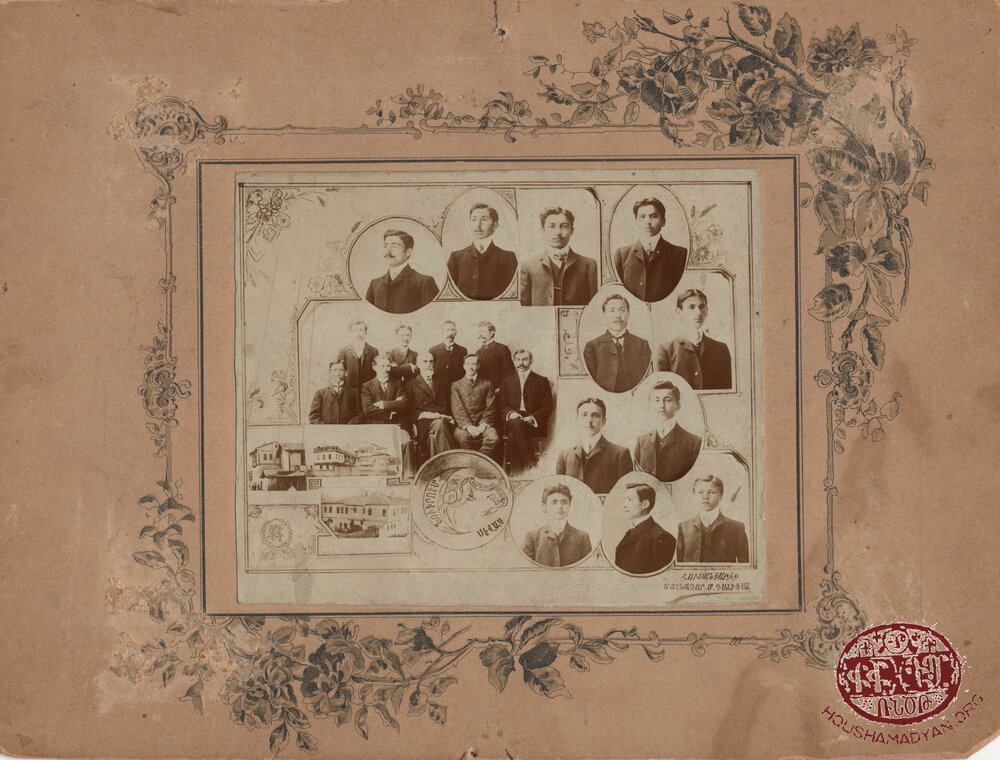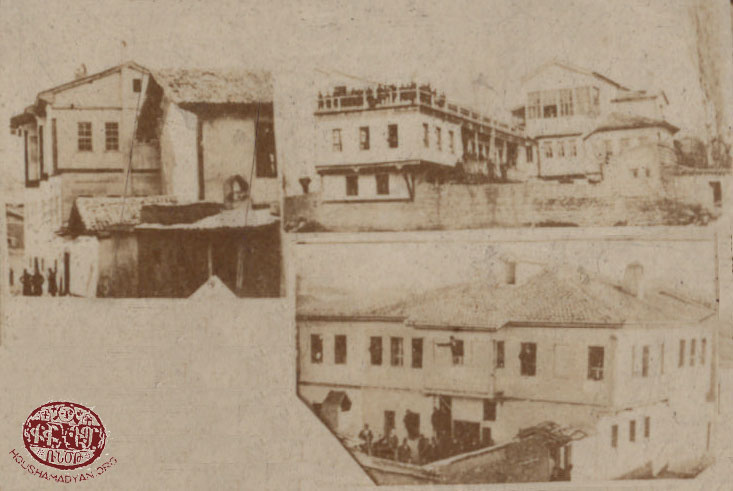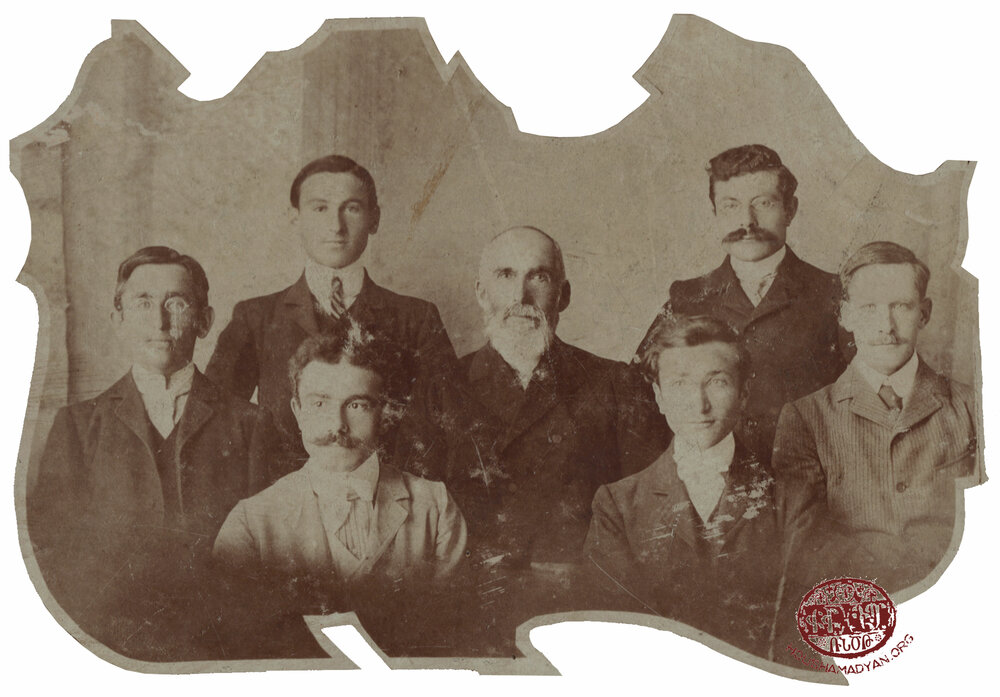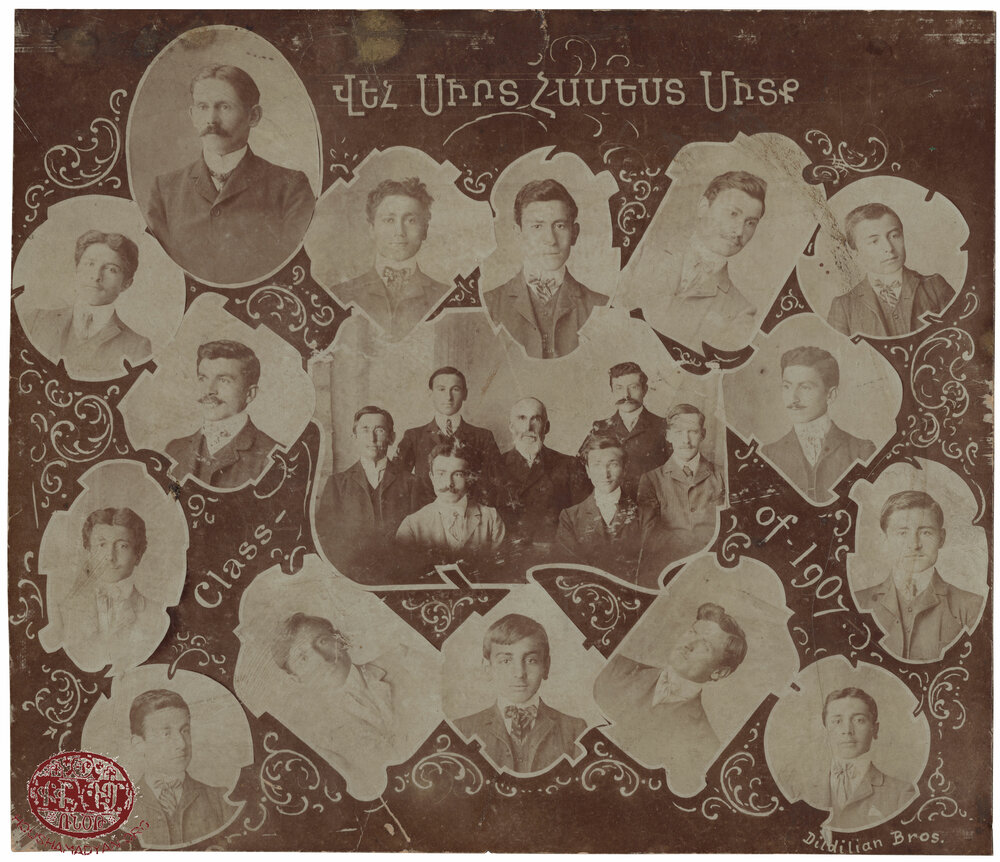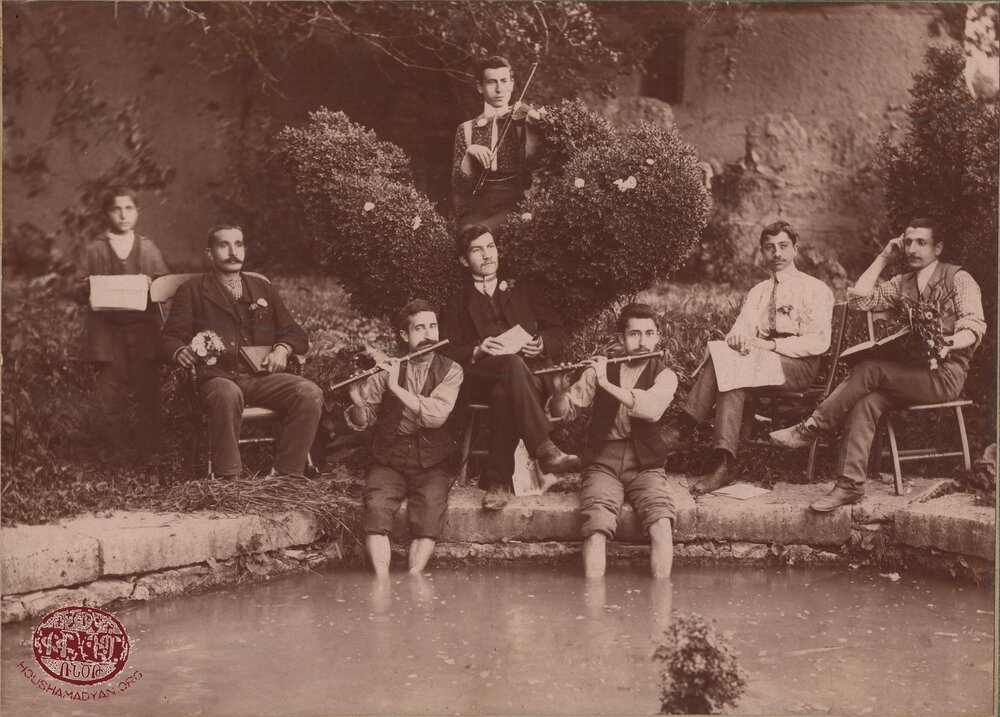Toumajan collection - Southfield (Michigan), USA

These items are part of Dickran Toumajan’s family collection. The oldest of the photographs is from Gürün, from which the Toumajan family originated. The family lived in Gürün until 1895, when anti-Armenian pogroms were organized in the city, alongside other parts of the Empire, during the reign of Sultan Abdulhamid II. Tovmas Toumajan (Dikran’s grandfather) survived the pogroms by fleeing to the Egyptian city of Alexandria.
After the end of the massacres and the re-establishment of peace, Tovmas Toumajan returned to the Ottoman Empire, and this time, alongside his family, settled in the city of Sepasdia/Sivas. Tovmas was married to Mariam, and they had three sons – Messiah/Hrant (born in 1888), Mihran (born in 1890), and Nishan (born in 1893); and two daughters – Alice/Armaveni (later Minasian) and Lousin (later Sahagian). The three sons received their secondary education at the American Missionaries’ College. Mihran graduated from Anatolia College in Marzevan/Merzifon, and Nshan graduated from the Bithynia Secondary School in Bardizag (presetn-day Bahçecik).
In 1909, the Toumajan family resettled in Istanbul, and established residence in the Üsküdar neighborhood. Mihran, one of the sons, was a great lover of music, and he became soon became very involved in musical endeavors when the renowned musicologist and cleric Gomidas Vartabed came to Istanbul. Under the latter’s tutelage, Mihran Toumajan gained an enormous amount of knowledge, which became the foundation of his future devotion to the field of Armenian music.
By the outbreak of the First World War, Mihran’s brother, Nishan (Dikran’s future father), had already emigrated to the United States, and had settled in the city of Boston. Mihran was in Istanbul, where he was conscripted into the army and sent to Diyarbekir. When the massacres of Armenian soldiers began, Mihran was saved thanks to the intervention of an officer, who arranged for him to be stationed in Aleppo, and told him to never return to Diyarbekir. Later during the war, Mihran escaped into Egypt, which, at the time, was under British mandate.
After the war, alongside many other Armenians, he traveled to Cilicia, where, alongside Parsegh Ganachian (another disciple of Gomidas Vartabed), he performed in choir concerts in Adana. In 1920 he was in Istanbul, again organizing concerts with surviving students of Gomidas Vartabed. After Istanbul, he moved to Paris, where he supplemented his musical education, and then, in 1923, he settled in the United States, joining his two brothers and two sisters. In 1966 he immigrated to Soviet Armenia, where he lived until his death in 1973. In the 1970s, music books written by him were published in Yerevan.
Gürün. The post-mortem photograph of Mahdesi Avedis Toumajan (in the center of the photograph, seated on the chair). Seated, from left to right – Hamaspyur (Hamas) Toumajan (wife of the deceased’s son, Samuel); Krikor Mermerian (husband of the deceased’s daughter, Gyule); Yeghisapet “Anna” Toumajan (the deceased’s widow, nee Vartanian); Nishan, sitting in Anna’s lap (the deceased’s grandson, son of Tovmas and Mariam); the deceased, Avedis Toumajan; Tovmas Toumajan (the deceased’s son); Mariam Toumajan (nee Nahabedian, Tovmas’s wife); Gyule (Gyulabla) Mermerian (nee Toumajan, the deceased’s daughter); Alice, the little girl standing in front of Mariam and Gyule (Tovmas and Mariam’s daughter). Standing, from left to right – Nouritsa (standing right behind Hamaspyur); an unknown man in the fez standing behind Nouritsa; Mihran and Messiah/Hrant (Tovmas and Mariam’s sons) are the two boys on the right of Krikor Mermerian; Gyul Khatoun Vartanian (Anna’s sister-in-law), standing behind Anna; Reverend Lousigian is the man wearing the fez right behind the deceased; Samuel (the youngest son of the deceased) is the man wearing the fez behind Mariam; the identity of the man on his left is unknown.



Graduates of the 1909 class of Anatolia College in Marzevan/Merzifon. At the center of the star are a photograph of the college building, and a photograph of its president Charles Tracy, alongside the Ottoman and American flags. The writing, in Arabic-scripted Turkish, reads “Liberty, Equality, Justice, and Brotherhood”, which was the principal slogan of the 1908 Young Turk Revolution.

Postcard, 1919. The photograph depicts Mihran Toumajan (on the left) and Parsegh Ganachian (on the right). On the left side of the photograph, are the Armenian letters ԿՎՀՍ, which, in English, stand for “Five Disciples of Gomidas Vartabed”. The postcard was an invitation to a concert, addressed to Alice and Lousin (Mihran’s sisters), and was signed by both Toumajan and Ganachian. The concert was to take place on November 22, 1919. The venue is unknown, but presumably it was Adana or Istanbul.

1) Circa 1926, Staten Island, New York. The yearly picnic of the “Armenian Song” organization, which was led by Mihran Toumajan. Mihran Toumajan is standing, on the very right, wearing a hat and a bow.
2) United States, 1927. The “Armenian Song” Choir. Mihran Toumajan, the conductor (wearing glasses), is seated on the center-left.

October 1908, Etchmiadzin. Group photograph of those who participated in the election of Matthew II Izmirlian as Catholicos. Back row, first from the left – Nazaret Daghavarian. Second row from the back, third from the right (hatless) – Arshag Chobanian. Third row from the back, fifth from the right – Gomidas Vartabed (wearing the Pectoral Cross). Seated, in front of the Russian Imperial military officer wearing the medals – Archibishop Kevork Soureniants (the future Catholicos).

New photographs
In this section we present new and rare photographs of Mihran Toumajan from the beginning of the century. The photos come from different sources.
Turnamian collection

The photographs displayed in this section were put at Houshamadyan's disposal by Ellen Turnamian. Ellen's ancestors were from Sivas/Sepasdia. Her maternal great-grandparents were Nshan and Baydzar. Her maternal grandparents were Ardash Jevelegian and Florence Jevelegian.
Ellen Turnamian's paternal side of the family was also from Sivas/Sepasdia, her grandparents were Dikran Turnamian and Vartouhi Tokakajian. Dikran was born in 1896 and Vartouhi was born in 1902, both of them in Sivas, they both went to the US and got married there, Vartouhi was 16 years old at the time. Ellen's father was Haig Turnamian.
One of Ellen's ancestors from the paternal side of her family is in these photos, but unfortunately we cannot recognize which one the Turnamian ancestor is. However, it is striking that we recognize Mihran Toumajan in all these photos, thus Mihran and Ellen Turnamian's ancestor must have been fellow students, as such they appear in the same graduation photos from Sivas.

Portraits of the 1907 graduates of the Marsovan/Merzifon
American College. The teachers can also be seen in the group photo. Photographer: the Dildilian Brothers.
We believe Mihran Toumajan is seated second from the left in the first row, in the group photograph in the middle of the poster. The writing on the top of the diploma reads: «Վեհ սիրտ համեստ միտք» in Armenian - "Noble heart modest mind".

A unique photo. From the presence of musical instruments, books, and newspapers we can assume that the photographer and the men in the photograph had the desire to produce an artistic photograph impregnated by their intellectual life. The location is unknown, but we assume that the photo was taken either in Sivas/Sepasdia or in Marsovan/Merzifon sometime after 1908.
Mihran Toumajan is sitting second from the right, he's in a white shirt and holds what appears to be a newspaper on his lap. Right next to the feet of the young man sitting in the center we can see the ARF Dashnaktsutyun’s “Droshak” «Դրօշակ» official newspaper, with the image of the revolutianary Sevkaretsi Sako, on the cover.

